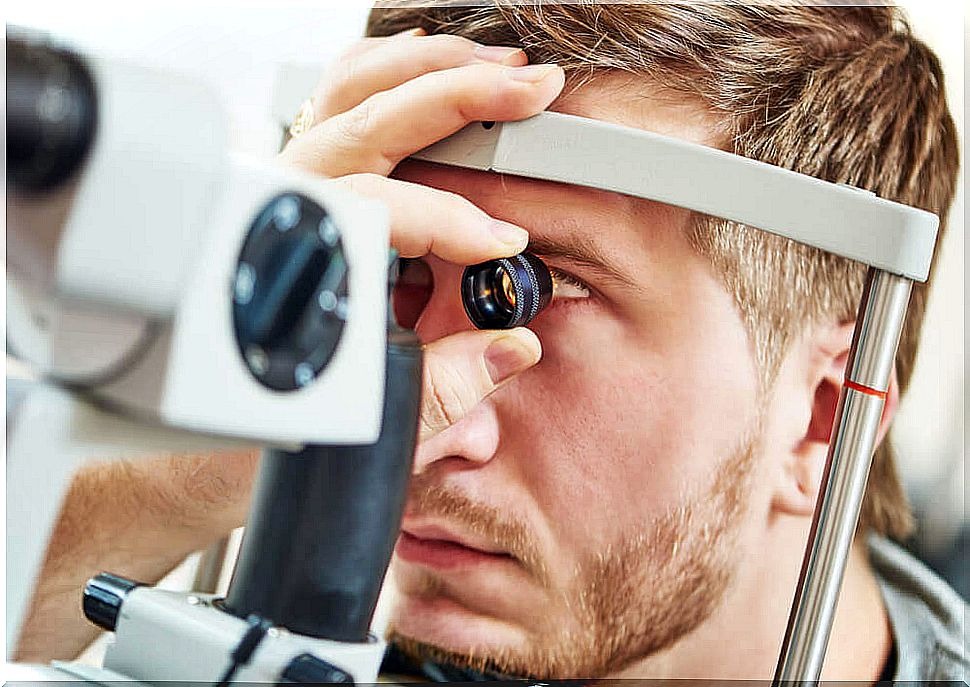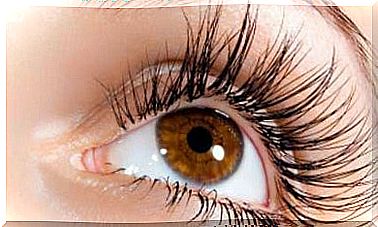Strabismus: Symptoms And Treatment
It is normal for the eyes of newborns to be sometimes shifted. If it persists after 4 months of age, it may be strabismus. Early diagnosis greatly improves the prognosis.

Strabismus is an eye problem that usually appears in childhood and has an excellent prognosis for recovery if diagnosed and treated before the age of 4. It consists of a misalignment in the focus of the eyes.
Often times, this problem is easily detectable, but sometimes it requires specialized diagnosis. In the most serious cases, it generates a significant aesthetic impact, in addition to vision problems.
Brain plasticity decisively influences the development of vision. Before the age of 4, there is more plasticity in the brain than at any other age. Hence the importance of detecting strabismus early to obtain a complete correction.
What is strabismus?

Strabismus is an altered alignment of the eyes when focusing. This results in the loss of parallelism, that is, the loss of the possibility that both eyes are pointing in the same direction when focusing on an object.
Often, strabismus appears around the time of birth or soon after. This is due to an impairment in the functioning of the eye muscles. These fail to maintain a balance and as a result, this generates a lack of coordination in the eyes.
Sometimes the strabismus is constant and does not show major variations. Other times, it appears intermittently, when the patient is tired, nervous or sick. Also, when it is located at a certain distance from the object on which it wants to focus.
In almost all cases, one of the eyes has greater visual acuity and can point forward. The other has less acuity and is located in a non-parallel position. Depending on their difference, several types of strabismus have been defined.
Types of strabismus
Usually, when the eye goes in or out, it is called horizontal strabismus. When it goes up and down, it is more a question of vertical strabismus. There are basically four types of strabismus, depending on the angle of deflection of the eyes, especially the non-dominant eye.
These types are:
- Esotropia: This occurs when both eyes are turned inward. It is accommodating, if it occurs when the patient is focusing, and it is a non-accommodating effort, if it is constant.
- Exotropias. The eyes are turned outwards. Usually, this type of strabismus appears late.
- Hypotropia. It usually affects only one eye facing downwards.
- Hypertropy. When one or both eyes are pointing upwards.
Symptoms of the disease

In principle, it is not considered abnormal for a newborn baby to occasionally have misaligned eyes. Despite this, by 3 or 4 months, the child should already be able to concentrate on the objects he is looking at with perfectly aligned eyes. The usual symptoms of strabismus are as follows:
- Eyes do not follow the same direction after 4 months of age
- Both eyes focus on the same point but don’t seem to be aligned correctly
- Double vision in adults
With mild strabismus, the child may only close one eye when it is sunny. It is also possible that he tilts his head to support the gaze or that he has problems with academic performance due to their vision.
Between 30% and 35% of people with strabismus lose their sight in non-dominant eyes. This is called amblyopia, or lazy eye. When strabismus occurs in adulthood, it is usual for the patient to see double.
Treatments available
The goal of strabismus treatments is to prevent the non-dominant eye from losing visual acuity and both eyes from getting the best possible alignment. They are oriented in such a way as to strengthen the eye muscles so that the deviation is moderate or disappears.
It is usual to recommend the use of glasses and eye exercises to strengthen the muscle. In the event of amblyopia, the treatment indicated is total occlusion. This means placing a patch on the dominant eye to force the other to increase its sharpness.
In the most serious cases, the treatment of choice is surgery. It makes it possible to weaken certain muscles and to strengthen others, to modify their insertion or to shorten one of them to obtain an aligned approach. Often, several surgeries are necessary.
Sometimes strabismus is also corrected by injecting a substance called botulinum toxin. This gives rise to muscle relaxation which allows the eyes to align properly in some cases.









